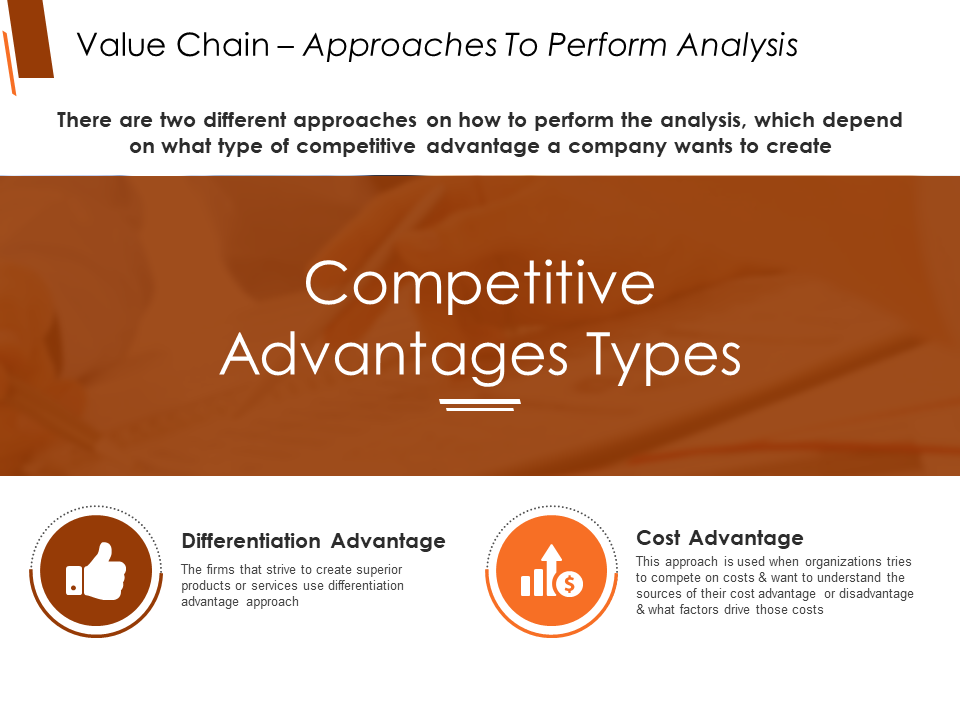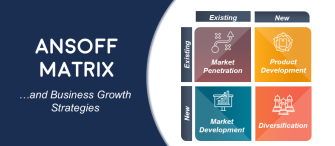Value chain model, developed by Michael Porter, is widely used to explain how business receives raw materials and adds value to them through various procedures to bring out the final product and deliver it to the customers. Every step of the process can be improved to increase the efficiency of the chain. Many companies conduct value chain analysis to deliver maximum value and create a competitive advantage.
The process is vast and extensive and requires step by step guidance. We bring you the most important templates to conduct the value chain analysis for your company.
Let’s look at them one by one.
Download Value Chain Analysis Framework Deck
7 value chain templates for an accurate analysis:
- Value Chain Analysis Framework:
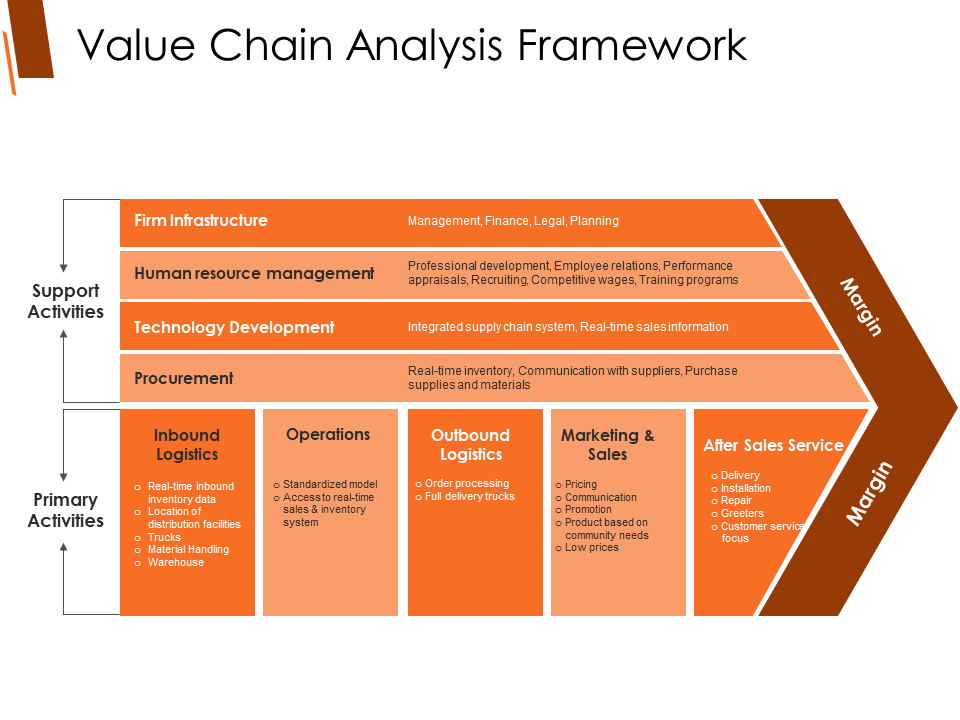
Every company follows the value chain model and the above slide explains explicitly how this framework works. The model is divided into two categories: primary and support activities. Both categories aim for a company to maximize the efficiency and create a competitive advantage. The primary activity includes inbound logistics, operations, outbound logistics and more which maintain all the receiving and warehousing of raw materials, add value to the raw materials and make them ready for the production. On the other hand, support activity increases the efficiency of the primary activities in a value chain.
- Primary Activities:
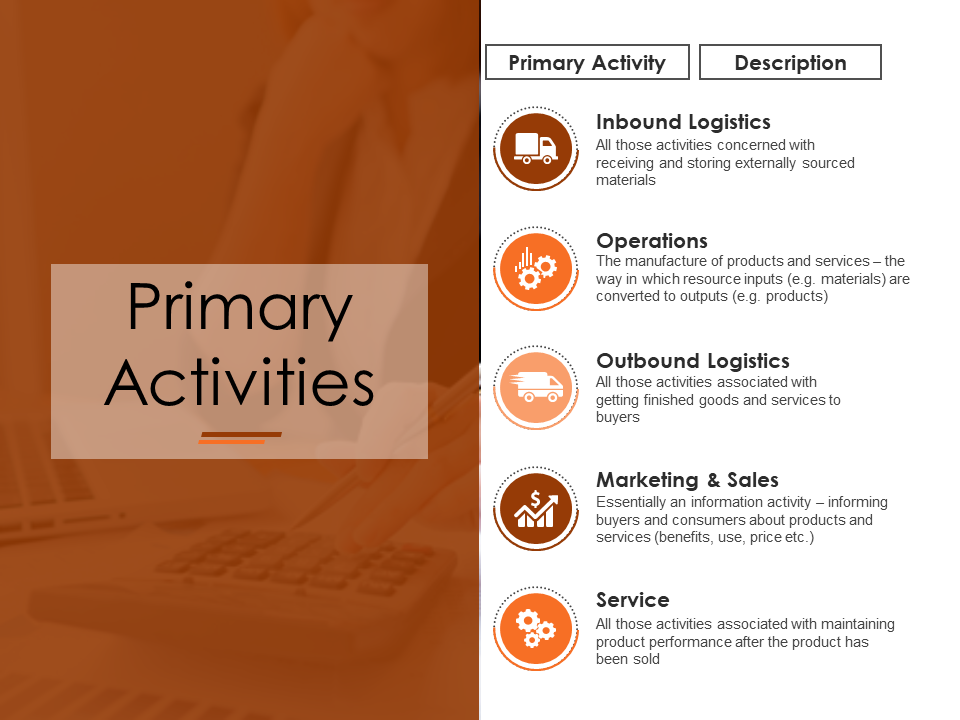
Primary activities include five components for a value chain to work. Starting with:
- Inbound Logistics: Jot down receiving, warehousing of raw materials. Also, showcase inventory management of raw materials.
- Operations: Explain steps of converting raw materials into a finished product.
- Outbound Logistic: It is the third activity in a value chain. Mention the ways of delivering a product to the customers.
- Marketing and Sales: As the name suggests comprises of all the strategies to intensify the product in the market. Create a marketing plan to reach to the masses.
- Service: The final step, works towards creating a better experience for the customers.
- Support (Secondary) Activities:
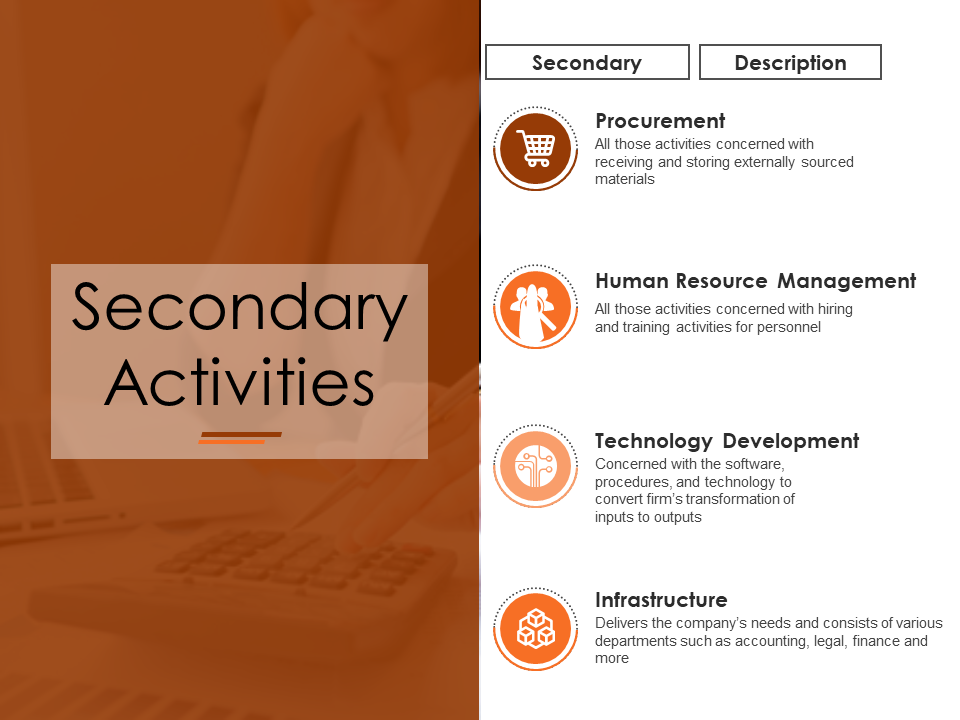
Primary activities are supported by secondary activities. Intensifying any of the support activity can benefit primary activities. Support activities include:
- Procurement: Mention all the resources that need to be purchased for the firm.
- Human Resource Management: Hire or layoff. Create a training plan or any activity that strengthens the personnel.
- Technology Development: Talk about how technology helps in bringing out the final product. Mention the software, procedures, and technology to convert firm’s transformation of inputs to outputs.
- Infrastructure: Mention company’s infrastructure and various departments that work together to deliver the company’s needs.
- Creating a Competitive Advantage:
Depending on which type of competitive advantage does a company want to create, an analysis is done accordingly. Basically, there are two types of competitive advantages: cost and differentiation advantage.
- Cost Advantage:
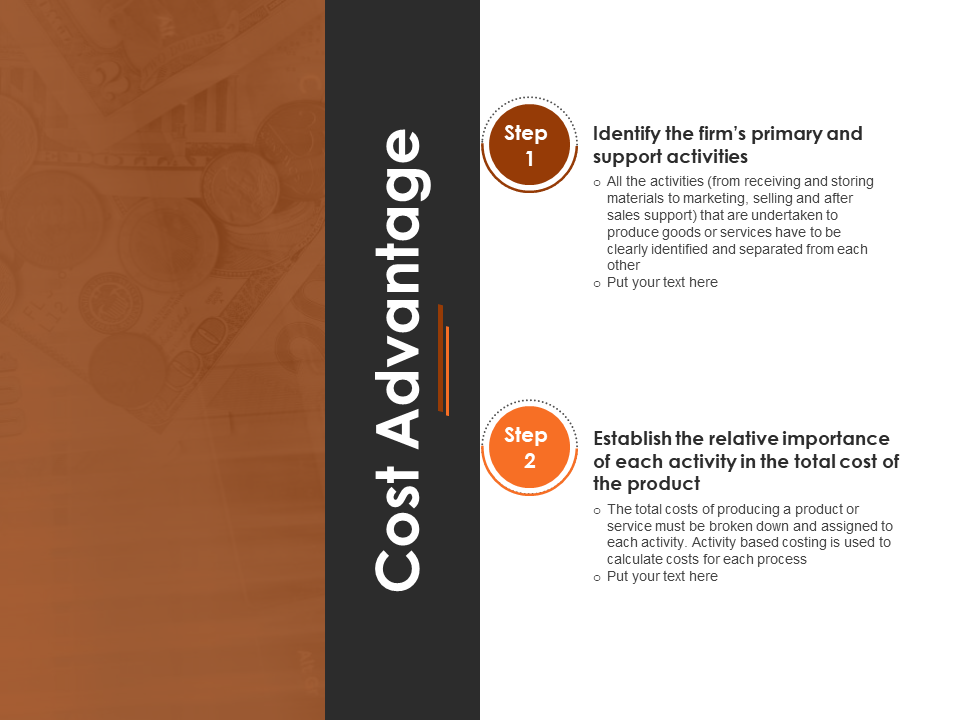
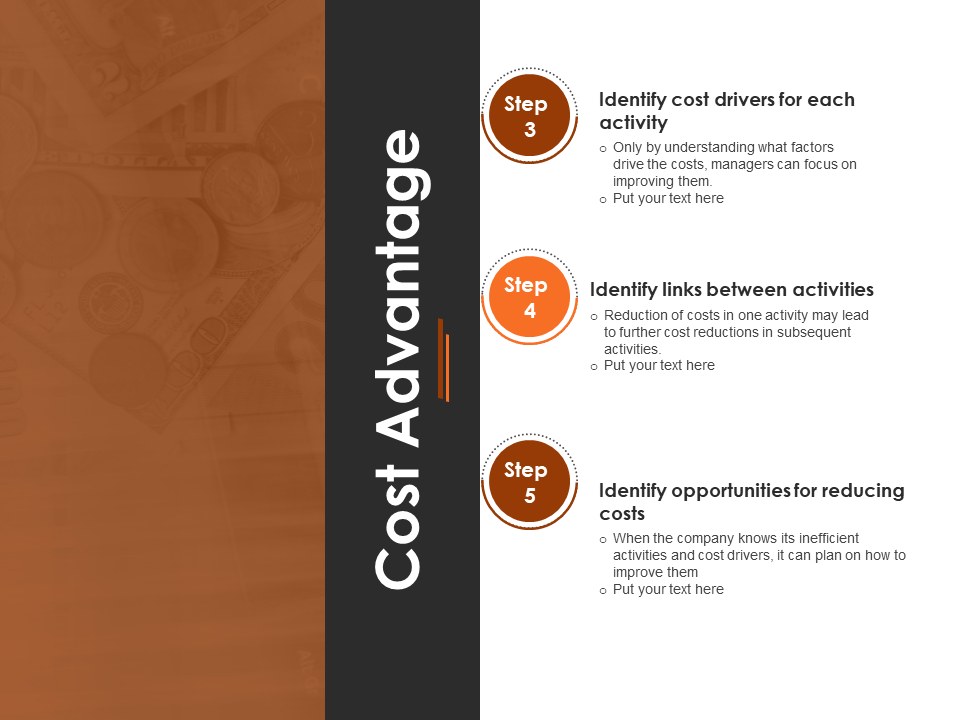
This approach is undertaken when a company tries to compete on costs and want to acknowledge the cost advantage and disadvantage. To completely understand the cost advantage, company must analyse these 5 steps:
- Identify the firm’s primary and secondary activities
- Establish the relative importance of each activity
- Figure out cost drivers for each activity
- Identify links between the activities
- Identify opportunities for reducing cost
Analyse the above mentioned 5 points to gain cost advantage.
- Differentiation Advantage:
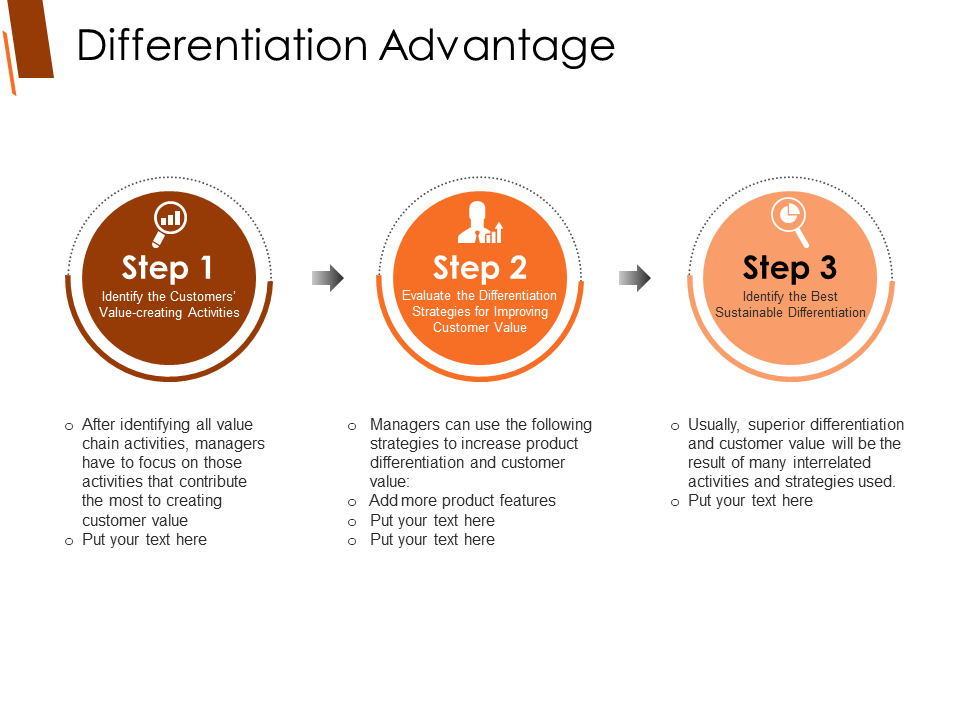
It is different than cost advantage in terms of that it comes from creating superior products and works towards satisfying the customer needs. Again, follow the mentioned steps below to attain differentiation advantage:
- Identify the customers value creating activities
- Evaluate the differentiation strategies
- Identify the best sustainable differentiation
- Value Chain Analysis:
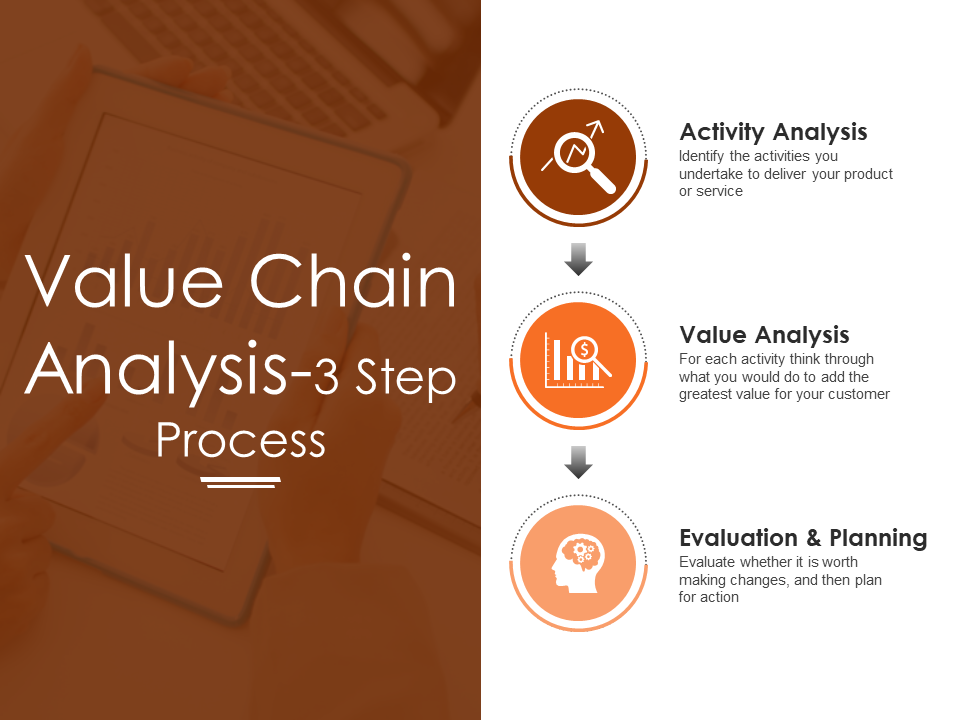
You can also incorporate the above slide for value chain analysis. This 3-step process analysis works the same way as the above-mentioned steps. Figure out the ways and techniques in which you can create value for the customers and then how can you maximize this value.
Download Ready-Made Value Chain Analysis Complete Deck
Carry out value chain analysis for your company using these templates to ensure you deliver best of the products to the customers at the least possible cost.


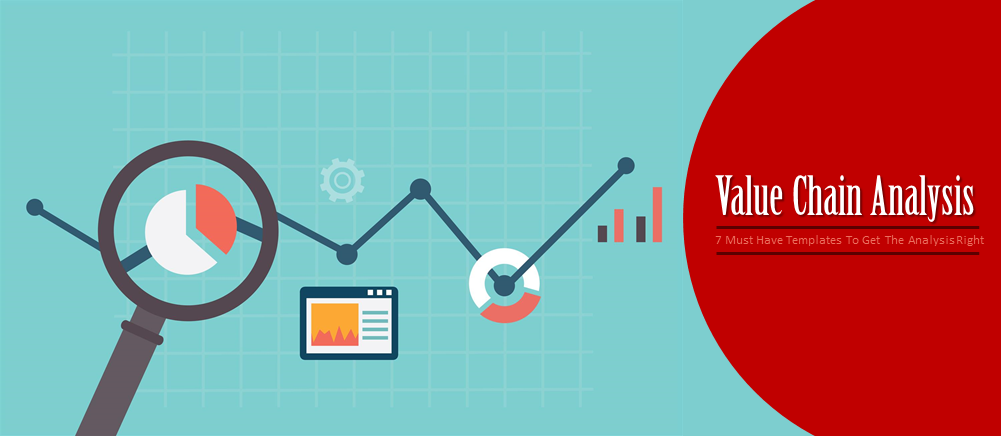


 Customer Reviews
Customer Reviews

